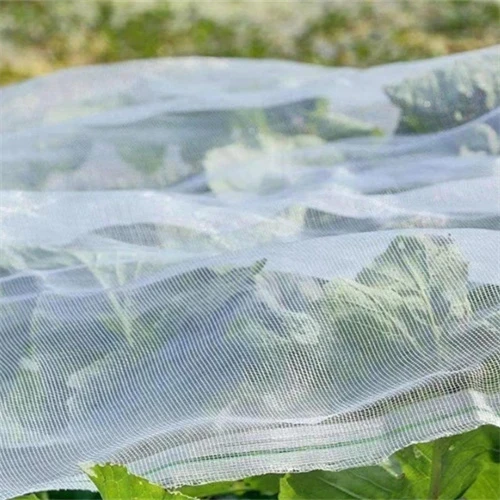-
 Afrikaans
Afrikaans -
 Albanian
Albanian -
 Amharic
Amharic -
 Arabic
Arabic -
 Armenian
Armenian -
 Azerbaijani
Azerbaijani -
 Basque
Basque -
 Belarusian
Belarusian -
 Bengali
Bengali -
 Bosnian
Bosnian -
 Bulgarian
Bulgarian -
 Catalan
Catalan -
 Cebuano
Cebuano -
 China
China -
 Corsican
Corsican -
 Croatian
Croatian -
 Czech
Czech -
 Danish
Danish -
 Dutch
Dutch -
 English
English -
 Esperanto
Esperanto -
 Estonian
Estonian -
 Finnish
Finnish -
 French
French -
 Frisian
Frisian -
 Galician
Galician -
 Georgian
Georgian -
 German
German -
 Greek
Greek -
 Gujarati
Gujarati -
 Haitian Creole
Haitian Creole -
 hausa
hausa -
 hawaiian
hawaiian -
 Hebrew
Hebrew -
 Hindi
Hindi -
 Miao
Miao -
 Hungarian
Hungarian -
 Icelandic
Icelandic -
 igbo
igbo -
 Indonesian
Indonesian -
 irish
irish -
 Italian
Italian -
 Japanese
Japanese -
 Javanese
Javanese -
 Kannada
Kannada -
 kazakh
kazakh -
 Khmer
Khmer -
 Rwandese
Rwandese -
 Korean
Korean -
 Kurdish
Kurdish -
 Kyrgyz
Kyrgyz -
 Lao
Lao -
 Latin
Latin -
 Latvian
Latvian -
 Lithuanian
Lithuanian -
 Luxembourgish
Luxembourgish -
 Macedonian
Macedonian -
 Malgashi
Malgashi -
 Malay
Malay -
 Malayalam
Malayalam -
 Maltese
Maltese -
 Maori
Maori -
 Marathi
Marathi -
 Mongolian
Mongolian -
 Myanmar
Myanmar -
 Nepali
Nepali -
 Norwegian
Norwegian -
 Norwegian
Norwegian -
 Occitan
Occitan -
 Pashto
Pashto -
 Persian
Persian -
 Polish
Polish -
 Portuguese
Portuguese -
 Punjabi
Punjabi -
 Romanian
Romanian -
 Russian
Russian -
 Samoan
Samoan -
 Scottish Gaelic
Scottish Gaelic -
 Serbian
Serbian -
 Sesotho
Sesotho -
 Shona
Shona -
 Sindhi
Sindhi -
 Sinhala
Sinhala -
 Slovak
Slovak -
 Slovenian
Slovenian -
 Somali
Somali -
 Spanish
Spanish -
 Sundanese
Sundanese -
 Swahili
Swahili -
 Swedish
Swedish -
 Tagalog
Tagalog -
 Tajik
Tajik -
 Tamil
Tamil -
 Tatar
Tatar -
 Telugu
Telugu -
 Thai
Thai -
 Turkish
Turkish -
 Turkmen
Turkmen -
 Ukrainian
Ukrainian -
 Urdu
Urdu -
 Uighur
Uighur -
 Uzbek
Uzbek -
 Vietnamese
Vietnamese -
 Welsh
Welsh -
 Bantu
Bantu -
 Yiddish
Yiddish -
 Yoruba
Yoruba -
 Zulu
Zulu
Effective Outdoor Bug Protection with Lightweight and Portable Mosquito Nets for Camping and Hiking
Embracing the Great Outdoors with a Bug Net Your Essential Camping Companion
When it comes to enjoying nature, few experiences rival the tranquility of camping beneath a starlit sky, surrounded by towering trees and the symphony of nocturnal sounds. However, for many outdoor enthusiasts, a common annoyance can quickly turn paradise into a battleground bugs. From relentless mosquitoes to pesky flies, these tiny invaders can ruin an otherwise perfect camping trip. This is where a high-quality outdoor bug net comes into play, serving as an essential tool for nature lovers everywhere.
Understanding the Need for Bug Nets
As the sun sets and temperatures drop, insects often become more active, particularly in areas near water or dense vegetation. Mosquitoes, in particular, are not just annoying; they can carry diseases such as West Nile virus and Zika virus, making the need for protection crucial. Bug nets act as a barrier, allowing you to enjoy the great outdoors without the constant threat of insect bites. Whether you're sitting around the campfire, trying to read a book, or simply stargazing, a bug net can provide much-needed comfort.
Types of Outdoor Bug Nets
When choosing a bug net, consider where and how you plan to use it. There are several types available, each designed for specific situations
1. Hammock Bug Nets Ideal for hammock campers, these nets are designed to drape over your sleeping setup, providing full protection. Many models come with integrated suspension systems, making setup quick and easy.
2. Tent Bug Nets Most modern tents include built-in bug screens, but standalone bug nets can be used in conjunction with a tarp for a lightweight shelter. These are perfect for minimalist backpackers.
3. Personal Bug Nets For those who wish to enjoy campfire evenings or picnics, personal bug nets can be worn like a hood and cover your face and neck, ensuring insects stay at bay while you enjoy your meal or leisure time.
outdoor bug net

4. Screen Rooms Larger and often more elaborate, screen rooms are great for family camping. They provide a spacious area where you can relax, eat meals, or hang out without the disruption of insects.
Tips for Using Bug Nets Effectively
- Choose the Right Location Setting up your bug net near standing water—where insects breed—might make a difference. Instead, opt for higher ground and areas with better airflow, as this can deter insects.
- Keep Nets Tightly Secured Ensure that your bug net is properly secured at the base to prevent bugs from sneaking in. Many models come with hooks, ties, or weighted edges that help anchor them down.
- Use Repellents While bug nets offer excellent physical protection, combining them with insect repellents can enhance your defense against bites. Look for DEET-free options for a more natural approach.
- Maintain Cleanliness Keep the area around your sleeping or sitting space clean and free of food scraps or waste that could attract bugs.
Conclusion
In conclusion, an outdoor bug net is an indispensable piece of gear for anyone looking to maximize their nature experience. By preventing annoying insect bites, these nets create a more inviting and comfortable environment for camping, hiking, and relaxing outdoors. Whether you're a seasoned camper or trying your first outdoor adventure, investing in a quality bug net can enhance your connection with nature, allowing you to focus on what truly matters enjoying the beauty and serenity of the great outdoors. So pack your gear, set up your bug net, and immerse yourself in the wonders of nature, free from the buzz of unwanted pests.
-
Shipping Plastic Bags for Every NeedNewsJul.24,2025
-
Safety Netting: Your Shield in ConstructionNewsJul.24,2025
-
Plastic Mesh Netting for Everyday UseNewsJul.24,2025
-
Nylon Netting for Every UseNewsJul.24,2025
-
Mesh Breeder Box for Fish TanksNewsJul.24,2025
-
Expanded Steel Mesh Offers Durable VersatilityNewsJul.24,2025











